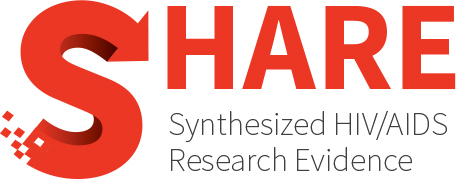A meta-analysis of adherence to antiretroviral therapy and virologic responses in HIV-infected children, adolescents, and young adults
Abstract
The relationship between adherence to antiretroviral therapy (ART) and virologic outcomes in HIV+ children, adolescents, and young adults has been notably understudied, with much of the extant research focused on specific sub-literatures, such as resource-limited regions, specific clinical outcomes and time frames. The authors sought to better characterize the relationship between adherence to ART and virologic functioning along various sample and methodological factors. The authors conducted a meta-analysis of thirty-seven studies and utilized a random effects model to generate weighted mean effect sizes. In addition, the authors conducted meta-ANOVAs to examine potential factors influencing the relationship between adherence and three categories of clinical outcomes, specifically Viral Load (VL) <100, VL < 400, and continuously measured VL. The analyses included 5,344 HIV+ children, adolescents, and young adults. The relationship between adherence behaviors and virologic outcomes varied across different methods of measurement and analysis. The relationship between adherence and continuously measured VL was significantly larger than for dichotomously-coded VL < 400 at Qb (20.69(1), p < .0005). Caregiver self-report indices elicited very small to small magnitude effects across both VL < 100 and VL < 400 outcomes and combined informant reporting (youth/adolescent and parent) produced significantly larger effects than caregiver report alone with adherence and VL < 400 outcomes at Qb (9.28(1), p < .005). More recently published trials reported smaller relationships between adherence and categorical clinical outcomes, such that year of publication significantly negatively correlated with VL < 100 (r = -.71(14), p < .005) and VL < 400 (r = -.43(26), p < .02). The data suggest that the magnitude of the relationship between ART adherence and virologic outcomes among heterogeneous samples of HIV+ children, adolescents and young adults varies across virologic outcomes and may be affected by moderating sample and methodological factors. Methodological and research recommendations for the interpretation of the current findings as well as for future HIV adherence related research are presented.
Authors
Kahana SY, Rohan J, Allison S, Frazier TW, Drotar D
Year
2013
Topics
- Population(s)
- Children or Youth (less than 18 years old)
- General HIV+ population
- Engagement and Care Cascade
- Treatment
